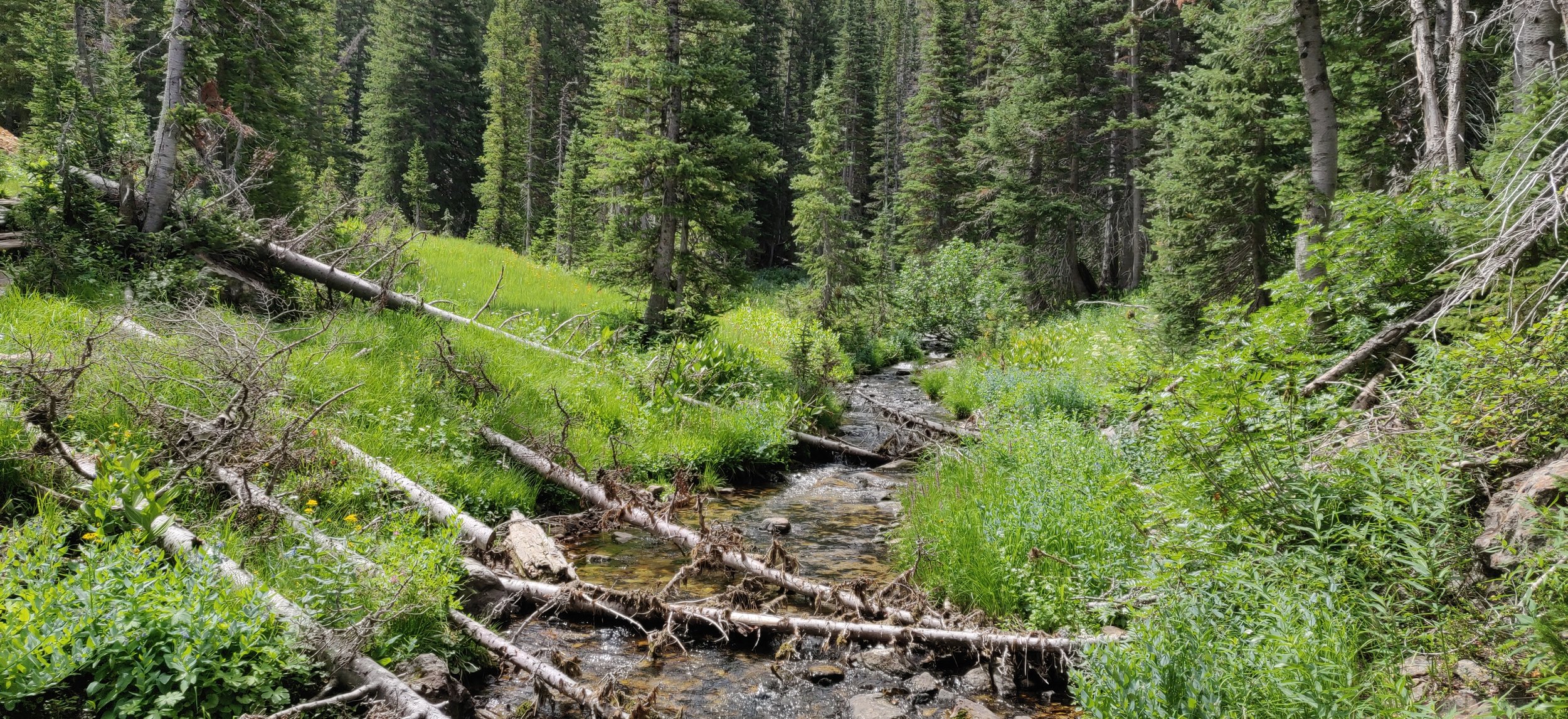Thoughts from a Boreal Toad Intern
Emily Frost, a Hogle Zoo intern on the Boreal Toad Project, recently joined Sageland Collaborative’s Mary Pendergast to survey Bloods Lake and Lake Lackawaxen for boreal toads.
Learn more about this survey and her experience below, and then sign up to join us for an upcoming survey!
Tell us about your survey at Bloods Lake and Lake Lackawaxen.
Emily Frost, Animal Husbandry student and intern, observes a large dragonfly larvae, great prey item for amphibians, in Bloods Lake, while looking for boreal toads and conducting a habitat assessment. Photo: Mary Pendergast
Although we did not see any toads on this trip, it was still very enjoyable and educational. Both lakes are beautiful scenery and a great hike. The mountains pop on both sides of the trail, which varies between a shady forest, rock fields, and wildflower fields. I loved these differences along the trail.
The hike to Bloods Lake took about 45 minutes to an hour, and then Lackawaxen was about 30 minutes past that. Going back down from Lackawaxen took around 45 minutes. Overall, the hike was about 5 miles round trip. This is a popular trail, so we encountered many people too.
What do you love most about amphibians?
Besides their unique life cycle and how connected they are to water, my favorite aspect of amphibians is their personalities. I’ve gotten to work with a variety of frogs and salamanders in human care and have always been impressed with how big their personalities are!
What drew you to Utah’s Hogle Zoo?
I came to Utah’s Hogle Zoo for an animal care internship because I wanted to expand my experiences working with zoo animals. I work in the African Savanna area of the zoo.
If you could paint a picture for the future of boreal toads, what would it look like?
A boreal toad swims across a riparian mountain habitat. Photo: Mary Pendergast.
I would love for boreal toads to be able to thrive both in their current range and in known historical areas. And I would like restoration efforts to be able to aid in restoring habitats. I also want more people—especially locals—to know about these animals and their role in the ecosystem.
What does wildlife conservation mean to you?
I like feeling positively involved in nature, and I don’t want to see it diminished. I grew up in a rural area surrounded by forests and wildlife, so preserving the places that I like to live and experience is also very important to me. Conservation gives extra meaning to the animals that I work with in human care, such as at the zoo. I know that by caring for them—many of whom are endangered—I am contributing to the future of a species.
Is there anything else you'd like to share?
I am not from Utah or the surrounding states, so boreal toads are relatively new to me. I value the opportunity to get into the field and do surveys, and I love learning about the animals and understanding their habitat needs.
Potential boreal toad habitat. Photo: Mary Pendergast



